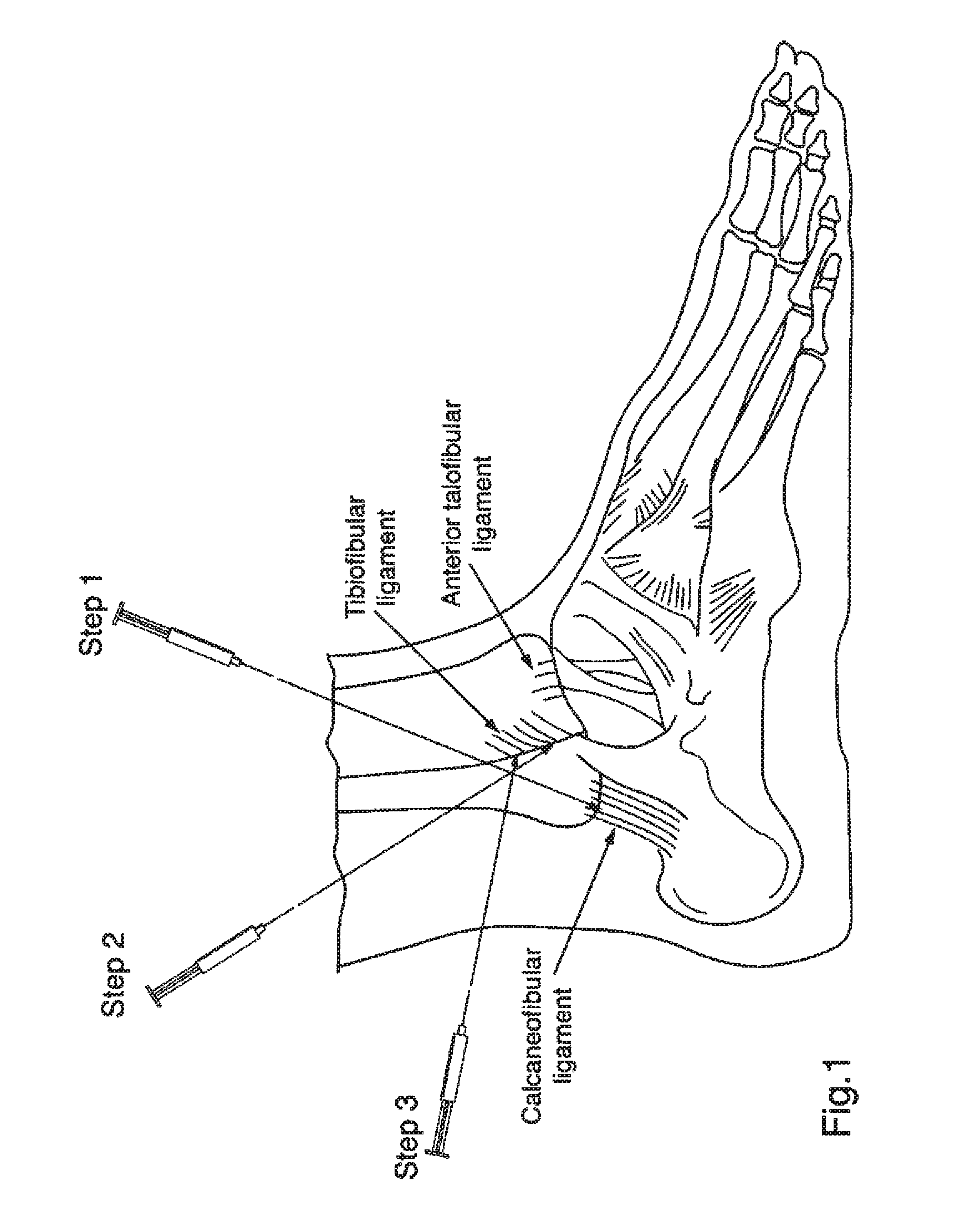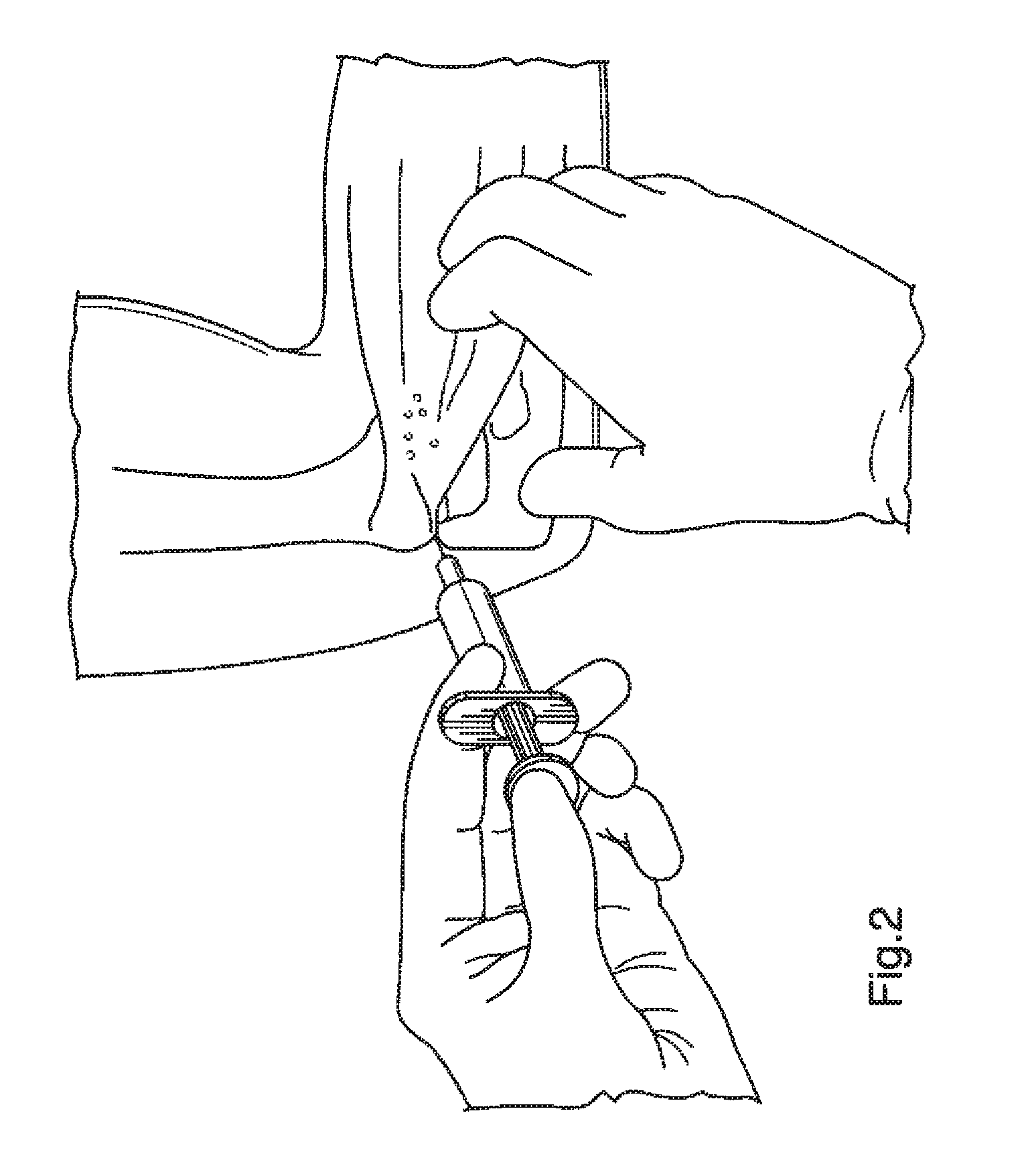Treatment of soft tissue injury using hyaluronic acid and botulinum toxin
a technology of hyaluronic acid and botulinum toxin, applied in the field of soft tissue treatment, can solve the problems of pain, heat, swelling and functional loss, complex process, etc., and achieve the healing effect of heat, potentiates the healing effect of ultrasound, and potentiates the healing effect of electrical stimulation
- Summary
- Abstract
- Description
- Claims
- Application Information
AI Technical Summary
Benefits of technology
Problems solved by technology
Method used
Image
Examples
example 1
HA and Botulinum Toxin Preparation
[0076]Hyaluronic acid was supplied in a single dose vial containing 1% Hyaluronic acid sodium salt solution with an average molecular weight of 500-2000 kilodaltons (Hyaltec, Scotland, UK) in enough excipient to make a total volume of 1.5 cc. Vials were stored at room temperature (10-30° Celsius). Botulinum toxin was provided as 60 units (in 1 cc) of Botox (Allergan, US). Total volume of hyaluronic acid and Botox was 2.5 cc.
example 2
Efficacy of HA and Botulinum Toxin on Ankle Sprain Following Periarticular Administration
[0077]Ankle sprains are among the most common of all sports injury with approximately 2 million people per year seeking medical treatment. Data from the National Hospital Ambulatory Medical Care survey 2000 emergency department summary list of 1.375 million emergency department visits in the United States alone attributable to ankle sprains representing about 1.3% of all visits. Hence, the economic impact of these injuries is high. Ankle sprains are most commonly affecting the lateral ligament complex (anterior talofibular, posterior talofibular, and calcaneofibular). These are secondary to varus or inversion sprains, including a spectrum of symptoms and severity such as pain, swelling, tenderness, loss of function typically defined as 1st, 2nd or 3rd degree. Most ankle sprains are of the 1st or 2nd degree or mild-to-moderate in symptom intensity.
[0078]Treatment guidelines are not consistent, ho...
example 3
Efficacy of HA and Botulinum Toxin on Lateral Epicondylitis Following Periarticular Administration
[0112]Tennis elbow (lateral epicondylitis) is a common cause of elbow pain and wrist extensor dysfunction in adults, affecting about 1-3% of the general population yearly. Localized tenderness around the lateral epicondyle generally characterizes the condition while pain is reproduced by resistant extension of the wrist or middle finger with the elbow in a straight extended position. Tennis elbow or lateral epicondylitis is common in upper extremity sport activities, including golf and tennis. It results in significant morbidity and time away from sport. There is currently no consensus on optimal treatment, however, topical or oral NSAIDs are often recommended for short-term pain relief. Corticosteroid injections have been shown to be beneficial at least temporarily, but carry the risk of adverse events. These are also matched by adverse events as a result of both topical and oral NSAID...
PUM
| Property | Measurement | Unit |
|---|---|---|
| molecular weight | aaaaa | aaaaa |
| molecular weight | aaaaa | aaaaa |
| concentration | aaaaa | aaaaa |
Abstract
Description
Claims
Application Information
 Login to View More
Login to View More - R&D
- Intellectual Property
- Life Sciences
- Materials
- Tech Scout
- Unparalleled Data Quality
- Higher Quality Content
- 60% Fewer Hallucinations
Browse by: Latest US Patents, China's latest patents, Technical Efficacy Thesaurus, Application Domain, Technology Topic, Popular Technical Reports.
© 2025 PatSnap. All rights reserved.Legal|Privacy policy|Modern Slavery Act Transparency Statement|Sitemap|About US| Contact US: help@patsnap.com


